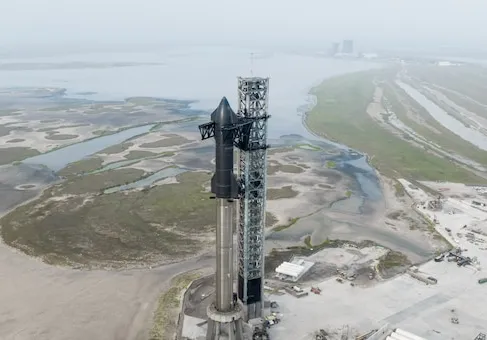SpaceX Starship Launches Successfully, But Explodes Before Orbit; Musk is planning improvements
SpaceX’s starship, touted as the world’s most powerful spacecraft — capable of carrying astronauts to the Moon, Mars and beyond — has successfully launched during its second launch attempt, only to later explode before reaching orbit.
Earlier, on Monday of this week, Starship’s first launch was canceled due to a last-minute pressurization system failure in the Super Heavy booster, the first stage or booster of the Starship launch system, which houses 33 Raptors. engines on board. However, today the Starship successfully lifted off from the Texas-based Starbase at around 8:28 AM CT (6:58 PM IST) after the Super Heavy booster successfully ignited its Raptor engines and took off.
#BreakingNews | #SpaceX‘s Starship, world’s biggest rocket, explodes during test flight. @GoyalYashco with the latest informationWatch #NewsEpicentre with @AnushaSoni23 pic.twitter.com/hS3OFaKuGg
— News18 (@CNNnews18) April 20, 2023
“Congratulations to the @SpaceX team on an exciting Starship test launch! I learned a lot for the next test release in a few months, Elon Musk tweeted.
“Rise of the Starship!” SpaceX said. It added: “Starship has cleared pad and beach! Vehicle is on nominal runway.”
The company notes that Starship experienced a “rapid unplanned dismount prior to stage separation” and that the teams involved continue to review the data collected to work on future flights.
“With a test like this, success comes from what we learn, and today’s test will help us improve the reliability of Starship as SpaceX strives to make life multiplanetary,” the company said.
“Rapid unscheduled disassembly”#SpaceXpic.twitter.com/lZqKIsdSPD
— David Leavitt (@David_Leavitt) April 20, 2023
The Starship upper stage spacecraft was supposed to complete a partial orbit around Earth before splashing down in the Pacific Ocean near Hawaii.
Featuring a Super Heavy booster and 33 Raptor engines, the Starship spacecraft is SpaceX’s largest rocket to date, larger than NASA’s Space Launch System. The two-part system has a height of 120 m, a diameter of 9 m and a payload of 100-150 tons. Its reusable methane-oxygen engines have twice the thrust of the Falcon 9 Merlin engines and can carry more than 100 people on long interplanetary flights. Starship assists with NASA’s Artemis mission and helps establish bases on the Moon and Mars along with SLS.
Read all the Latest Tech News here.




